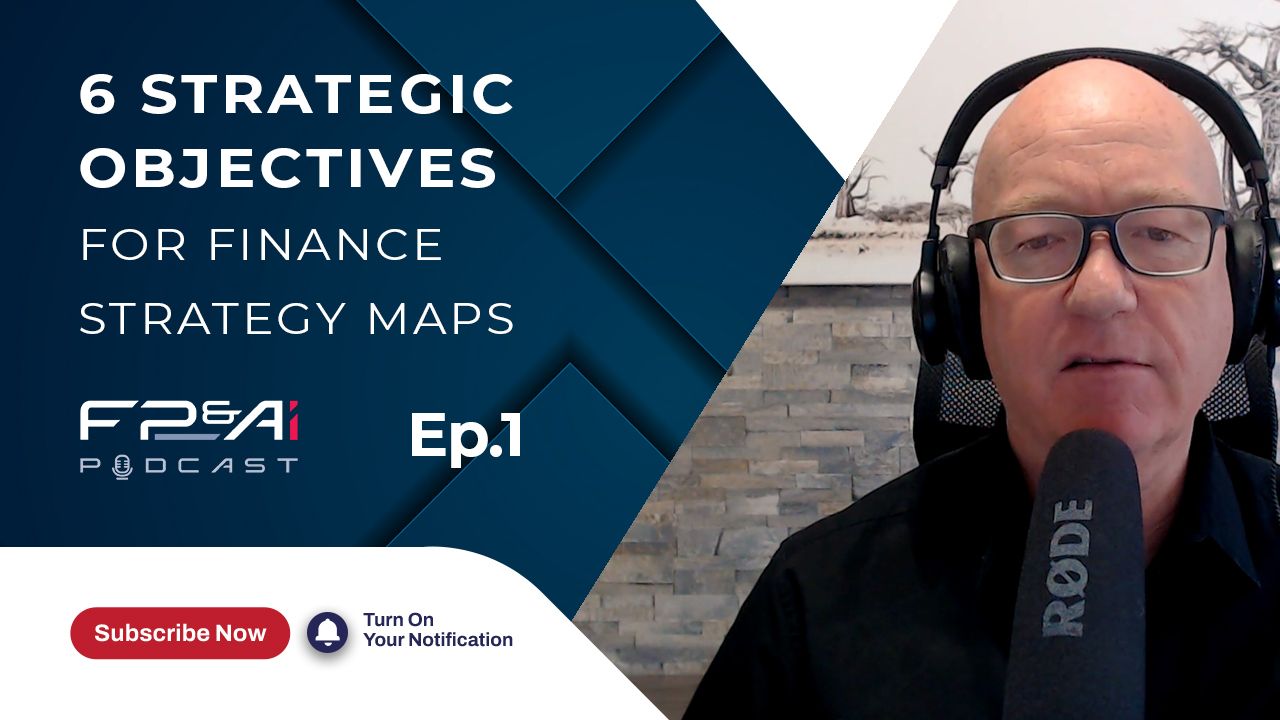FP&Ai Podcast: Ep 1 : 6 Strategic Objectives for Finance Strategy Maps
In this episode of the Smart Business Performance Podcast, Roger Knocker welcomes Anthony Wilson and Donovan Moses to explore the strategic objectives of the finance function and how they can align with broader business goals.
The discussion highlights key areas where finance can create value—through efficiency, compliance, working capital management, operating margin improvement, and by acting as a trusted advisor across the business.
Tune in now to discover the practical steps finance teams can take to strengthen their role as true business partners.
Conversation Highlights:
[00:04] Roger introduces the topic of finance’s role in setting strategic objectives and welcomes Anthony Wilson and Donovan Moses.
[01:06] Roger explains that strategic objectives set the long-term direction for finance, guiding the function over a 3–5 year horizon.
[02:30] Anthony Wilson highlights efficiency as a primary goal, pointing out the growing pressure on finance to deliver faster results. He notes that automation and better tools are replacing reliance on Excel.
[06:02] Wilson stresses closing speed as a key efficiency benchmark, explaining that top performers close in a few days while others can take weeks.
[06:49] Donovan Moses identifies working capital optimization as a critical objective, emphasizing the need for collaboration between finance and supply chain to ensure cash isn’t tied up unnecessarily in excess inventory.
[11:27] Roger introduces operating margin improvement as another finance objective, noting the importance of tracking customer profitability, asset utilization, and ROI on projects.
[14:18] Wilson highlights the customer perspective, explaining that stakeholders expect accurate, timely, and consistent information. Dashboards and data visualization are recommended as more effective tools than spreadsheets.
[17:31] Wilson explains how visualization enables the business to detect trends and shifts more quickly, improving decision-making.
[23:16] Moses emphasizes the importance of compliance and risk management, pointing out that reliable execution of payroll, tax, and credit processes is essential for business stability.
[27:12] Roger stresses that once compliance and efficiency are established, finance can step into the role of trusted advisor, supporting leaders with insights on pricing, costs, and profitability.
[29:37] Wilson reinforces that finance must build trust by delivering efficiently and reliably before moving into advisory functions.
[30:32] Roger closes the discussion by summarizing six key finance objectives: efficiency, working capital optimization, operating margin improvement, delivering trusted information, compliance, and advisory partnership.
About Our Sponsor:
KPI Management Solutions helps organizations achieve their stretch goals using KPIs, OKRs, AI-enabled technology, and training.




